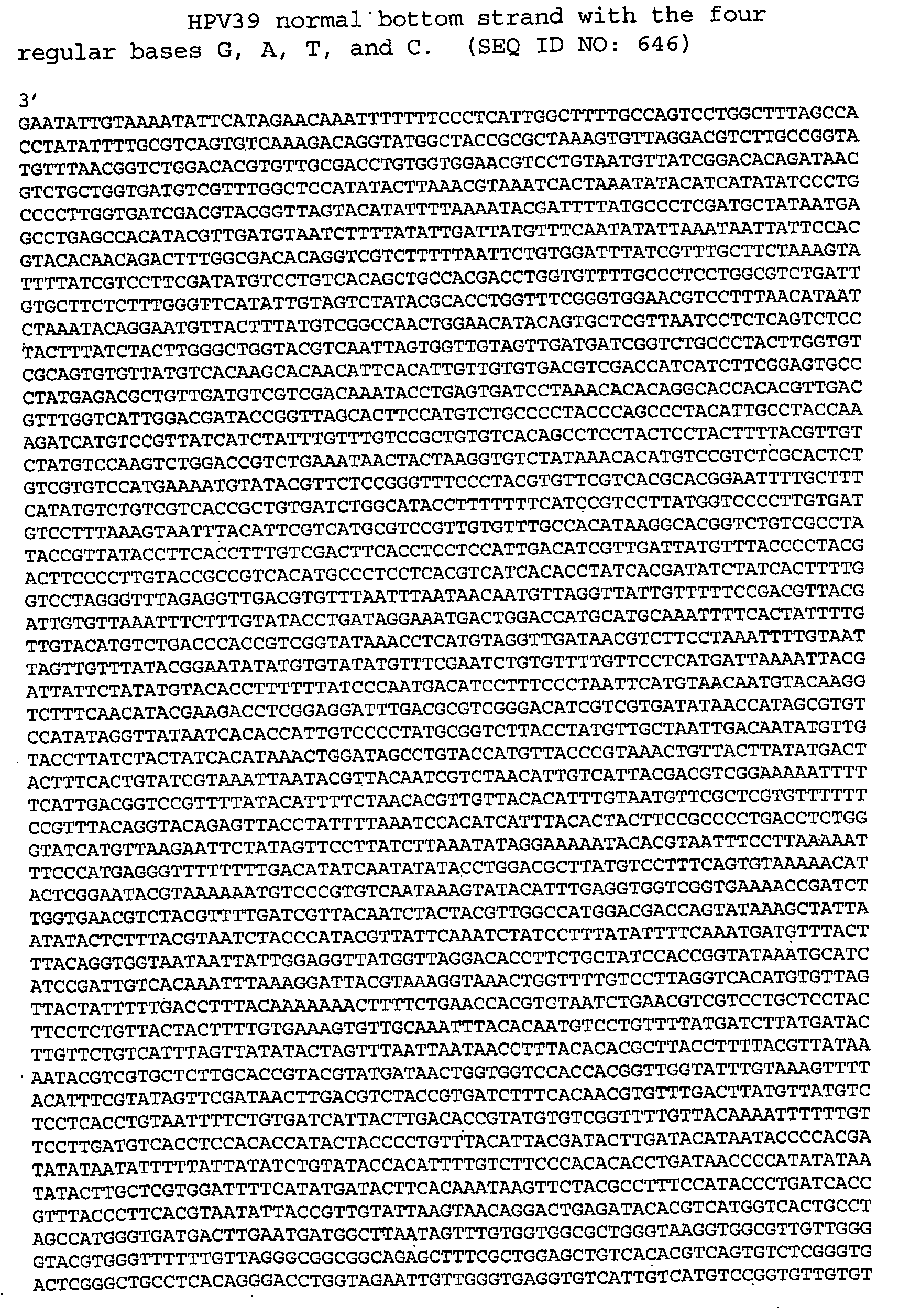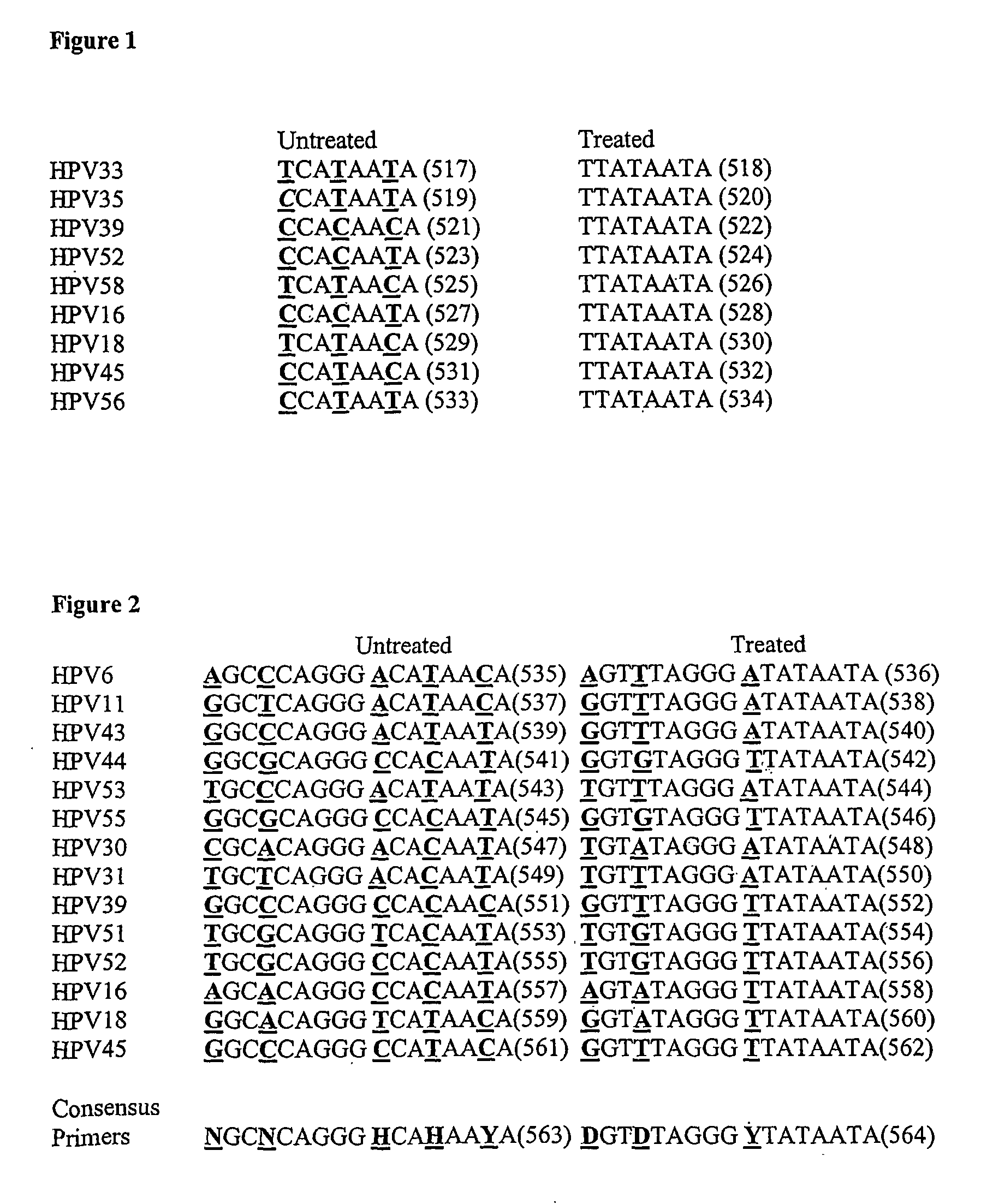Detection of human papilloma virus
a human papilloma virus and detection method technology, applied in the field of human papilloma virus detection, can solve the problems of reducing the number of cytosines in the total number of cytosines, affecting the pathological interpretation of diseased cell populations, and limiting the technology system itself. the effect of reducing the number of cytosines
- Summary
- Abstract
- Description
- Claims
- Application Information
AI Technical Summary
Benefits of technology
Problems solved by technology
Method used
Image
Examples
examples
[0242]To reiterate the foundations on which we have based our bioinformatic analyses in silico, the standard HPV type utilized for reference purposes is HPV16 of the Family Papovaviridae, Genus Papillomavirus, originally designated as such by the International Committee on Taxonomy of Viruses, ICTV, (1993, Van Rast, M. A., et al., Papillomavirus Rep, 4, 61-65; see also, 1998 Southern, S. A. and Herrington, C. S. Sex. Transm. Inf. 74, 101-109), although taxonomic upgrades to the Papillomaviridae are sometimes used interchangeably in the prior art. To avoid ambiguity, we use the fully sequenced 7904 base pair genome of HPV16 as a standard comparator (National Center for Biotechnology Information, NCBI locus NC—001526; version NC—001526.1; GI:9627100; references, Medline, 91162763 and 85246220; PubMed 1848319 and 2990099).
[0243]In addition, we used the fully sequenced genomes of the so called high-risk HPV types 16, 18, 45 and 56 with NCBI accession numbers of NC-001526, NC-001357, NC-...
PUM
| Property | Measurement | Unit |
|---|---|---|
| volume | aaaaa | aaaaa |
| volume | aaaaa | aaaaa |
| volume | aaaaa | aaaaa |
Abstract
Description
Claims
Application Information
 Login to View More
Login to View More - R&D
- Intellectual Property
- Life Sciences
- Materials
- Tech Scout
- Unparalleled Data Quality
- Higher Quality Content
- 60% Fewer Hallucinations
Browse by: Latest US Patents, China's latest patents, Technical Efficacy Thesaurus, Application Domain, Technology Topic, Popular Technical Reports.
© 2025 PatSnap. All rights reserved.Legal|Privacy policy|Modern Slavery Act Transparency Statement|Sitemap|About US| Contact US: help@patsnap.com



